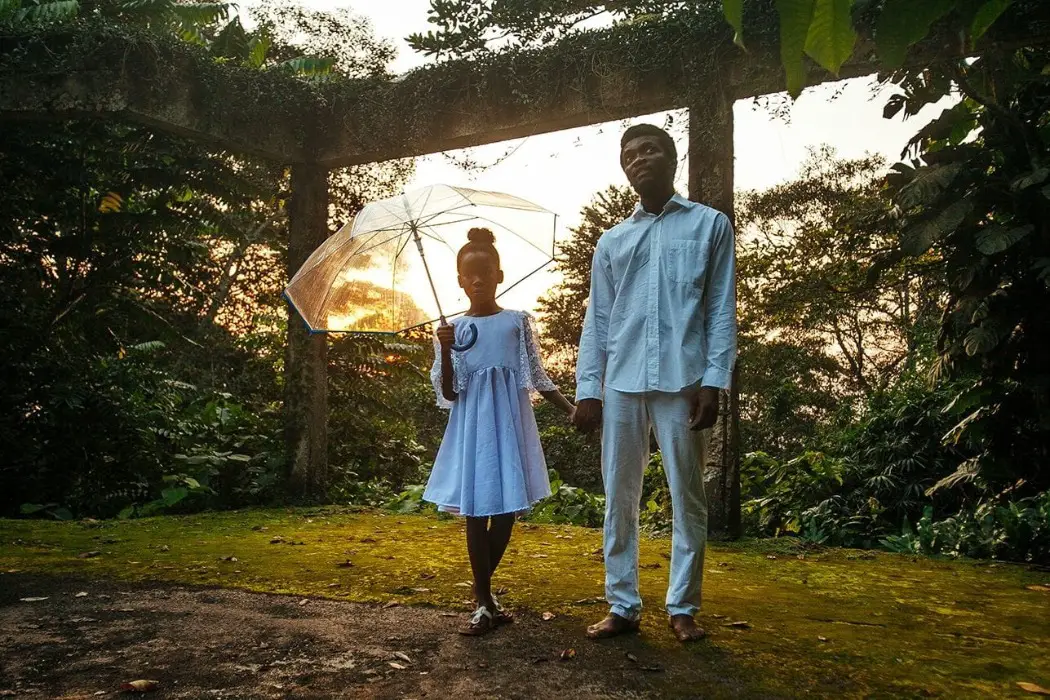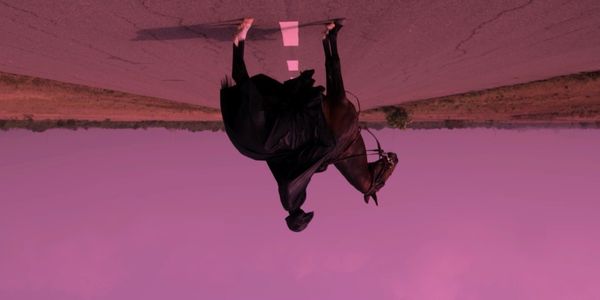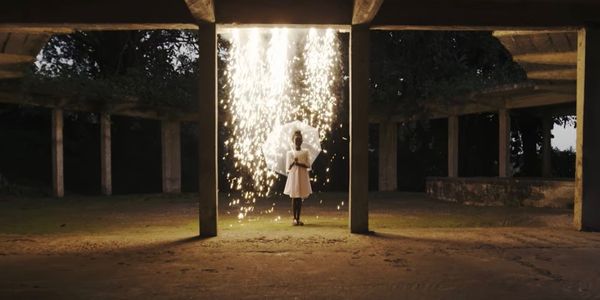THE BURIAL OF KOJO: Aesthetic Over Everything

Soham Gadre is a writer/filmmaker in the Washington D.C. area.…
‘Show, don’t tell’ is an often repeated phrase in cinema. Sam “Blitz” Bazawule, a Ghanian-American hip-hop artist, does both a lot and in equal measure. His debut film, The Burial of Kojo, is dictated both by the narration of its central character Esi, who recounts her journey to track down the tragic existence of her father and by the kaleidoscopic imagery that haunts her through her memories and dreams.
The film’s impact comes from the bold highlighter tinged landscape of Ghana, the gliding camera movements and the Afrobeat, jazz, and pop-infused score that Bazawule composed himself. It’s a film with a lot to offer aesthetically, with undercurrents of social strife and personal tragedy.
The Colors of Dreams and Memories
Movies about Africa made by white filmmakers tend to focus their attention on the poverty of the region, the economic struggles of the people, and the landscape of squalor that surrounds them. African filmmakers, however, are more eager to tap into the spiritual traditions of magical realism that defined the indigenous peoples of the continent. The Burial of Kojo works in a similar space as a recent Kenyan film, Mbithi Masya’s Kati Kati. Both movies feature a central female character grappling with shards of an unclear past.

The visual canvas and music dictate the entire tone, turning the tragedy and strife experienced by the characters into a uniquely spiritual journey infused with myth and memory. Everything in the movie looks pristine, as the world does to a child. Every color pops and their vividness within dreams and reality are the same, and thus, the lines between both become blurred. For children, memory and dreams are much more emotionally impactful because they do not yet have a full understanding of symbolism, making images, sounds, and colors all register purely as feeling.
She recalls her father having a dream about the waves slowly swallowing a burning car. She herself is haunted by the images of a phantom Crow riding horseback in a magenta-tinged alternate dimension. Finally, the day she was born, her father imagined her standing under a clear umbrella with brilliant sparks dropping from the skies. All of these ambiguous images form a puzzle for Esi to solve when she realizes her father has gone missing.
Real to Surreal
Bazawule’s film, however, does not completely exist in a metaphorical state as Kati Kati does. His characters, at least most of them, are part of the real world and by virtue, must be affected by the politics of it. A sequence at the local police station, where the acting officer tries to hassle Esi and her mother for some pocket money to “motivate” the officers in their search for Kojo is a concise and jarring depiction of corruption. There are passing remarks regarding the takeover of manufacturing in the region by Chinese contractors.

But Bazawule is not interested in the nitty-gritty of the state of the nation or why these changes occur. In an interview with The Shadow League, he said, “A lot of it was formed by what is happening right now with the socio-political climate… but I was also clear that I didn’t want to tell the story from a macro-perspective.” The political barriers become merely sideshow inconveniences in Esi’s personal journey.
The Burial of Kojo: When Beauty Masks Tragedy
From the title of the film itself, we know the film involves death and by virtue, grief. The Burial of Kojo skims these feelings the same way it skims the social politics of its setting.
While regrets of the past and the loss of loved ones are central points of Esi’s narration, they are engulfed by an almost overbearingly surrealist style. Experimentation is a great thing to make your mark on, but for debut filmmakers like Bazawule, it can also force the movie’s central focus to unravel. The major drawback to The Burial of Kojo becomes the actors and plot’s inability to elicit the necessary emotional gravitas of Esi’s loss of her father. There is so much attention concentrated on the look and style of the film, which becomes a gliding montage of incredibly vibrant looking images, that what lingered in my mind even amidst sequences of tragedy and death is just how beautiful everything looks.
Bazawule is a gifted visual artist and an equally gifted musician. His influences are clear and his film feels distinctly personal in style and wholly rooted in the traditions of his past. It’s an interesting narrative that values the experimental aesthetic qualities of storytelling, sometimes to the detriment of emotion and depth. What can be said about The Burial of Kojo is that it is an imperfect start to a career for Bazawule that yet clearly showcases a personal vision at hand, one which has certainly piqued curiosity for what comes next.
The Burial of Kojo was released in the US on March 29.
Does content like this matter to you?
Become a Member and support film journalism. Unlock access to all of Film Inquiry`s great articles. Join a community of like-minded readers who are passionate about cinema - get access to our private members Network, give back to independent filmmakers, and more.
Soham Gadre is a writer/filmmaker in the Washington D.C. area. He has written for Hyperallergic, MUBI Notebook, Popula, Vague Visages, and Bustle among others. He also works full-time for an environmental non-profit and is a screener for the Environmental Film Festival. Outside of film, he is a Chicago Bulls fan and frequenter of gastropubs.












